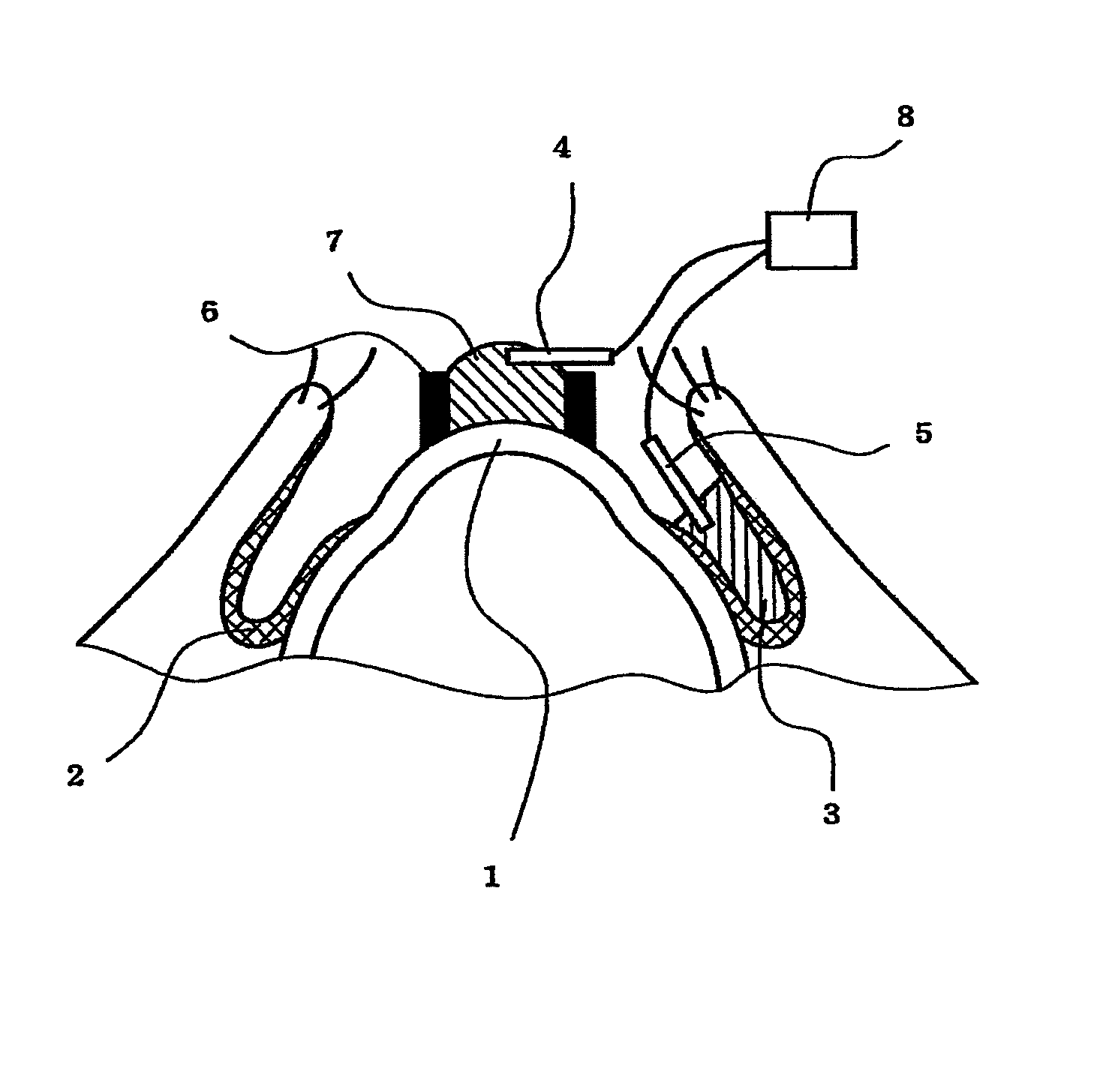Method of measuring electrical resistance value of corneal trans-epithelium
a technology of electrical resistance value and transepithelial, which is applied in the field of measuring the electrical resistance value of the corneal transepithelium, can solve the problems of difficult to quantitate the disorder of the corneal epithelium, serious corneal ulcers, and inability to cur
- Summary
- Abstract
- Description
- Claims
- Application Information
AI Technical Summary
Benefits of technology
Problems solved by technology
Method used
Image
Examples
example 1
Evaluation of Corneal Disorder Due to BAC by Living Corneal TER Measurement Requiring No Anterior Chamber Centesis (Referred to as Conjunctival Sac Method) (FIG. 1)
[0099]Silver-silver chloride electrode having a rod shape was placed on a cornea and into a conjunctival sac of a living rabbit, and a 0.02% BAC was administered thereto. A change in the corneal TER due to exposure to BAC was measured by a voltage-electric resistance value measuring device. A rubber ring (6 mm in the inner diameter) was fixed onto the cornea around the periphery of the electrode by using a bioadhesive (Aron alpha A from Sankyo Co., Ltd.) for insulation, so that an electric current is surely passed through the epithelium of the cornea. An AC current of ±20 μA was flowed, and a change curve of TER, a reduction of TER and a TER value after a lapse of 60 seconds from the exposure to 0.02% BAC, were compared with those from the conventional measuring method in which the anterior chamber centesis was carried ou...
example 2
Preparation of Living Corneal TER Measuring Device (FIG. 6)
Corneal Electrode Portion
[0102]A silver electrode and a silver-silver chloride electrode having a diameter of 1 mm were placed on a round cover glass having a diameter of 12 mm. PDMS having a circular cylinder shape with 10 mm in diameter and 6 mm in inner diameter and having a curvature radius of the corneal contact surface of 7.9 mm was secured onto the cover glass by using an adhesive. An Eppendorf tube was attached to a rear side (on the side opposite to the corneal contact surface (cover glass side)) for mount onto a slit-lamp. The inner space of the PDMS was filled with an atelocollagen gel and its curvature radius was adjusted to 7.9 mm.
Conjunctival Electrode Portion
[0103]A silver electrode and a silver chloride electrode having a diameter of 1 mm were placed on a PET sheet of 0.005×0.5×1 cm, at position of 1 mm from the distal end of the sheet on the eyeball side. The PET sheet, the silver electrode and the silver ch...
PUM
 Login to View More
Login to View More Abstract
Description
Claims
Application Information
 Login to View More
Login to View More - R&D
- Intellectual Property
- Life Sciences
- Materials
- Tech Scout
- Unparalleled Data Quality
- Higher Quality Content
- 60% Fewer Hallucinations
Browse by: Latest US Patents, China's latest patents, Technical Efficacy Thesaurus, Application Domain, Technology Topic, Popular Technical Reports.
© 2025 PatSnap. All rights reserved.Legal|Privacy policy|Modern Slavery Act Transparency Statement|Sitemap|About US| Contact US: help@patsnap.com



